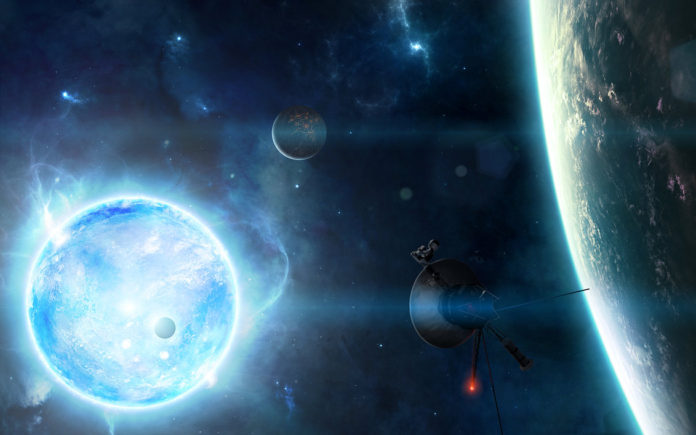Studying the universe and beyond is no easy task, given that everything is so far away and astronomers are grateful for any help they can get. This month that help comes in the form of a low-cost attachment for telescopes that enables researchers to observe sights at a precision never achieved before.
The device was created by Penn State astronomers in collaboration with the nanofabrication labs at RPC Photonics in Rochester, New York using custom beam-shaping diffusers that minimize the distortions which can affect the precision of the captured images. “This inexpensive technology delivers high photometric precision in observations of exoplanets as they transit – cross in front of – the bright stars they orbit,” said Gudmundur Stefansson, lead author of the study, a graduate student at Penn State, and NASA Earth and Space Science Fellow. “This technology is especially relevant considering the impending launch of NASA’s Transiting Exoplanet Survey Satellite (TESS) early in 2018.”
Diffusers are a great way to enhance the capability of telescopes as they are adaptable and cheap. For these reasons alone Stefansson believes that diffuser-assisted photometry will help astronomers gain a deeper understanding of planet candidates from down here on Earth. “Beam-shaping diffusers are made using a precise nanofabrication process where a carefully designed surface pattern is precisely written on a plastic polymer on a glass surface or directly etched on the glass itself,” confirmed Suvrath Mahadevan, associate professor of astronomy and astrophysics at Penn State and one of the authors of the study. “The pattern consists of precise micro-scale structures, engineered to mold the varying light input from stars into a predefined broad and stable output shape spread over many pixels on the telescope camera.”
The new diffuser technology was tested out on the Hale telescope at Palomar Observatory, California; the ARC 3.5m Telescope at Apache Point Observatory, New Mexico; and the 0.6m telescope at Davey Lab Observatory at Penn State. In each case, the diffuser produced more precise images in both size and intensity than conventional methods which are essential in achieving accurate measurements. When a focused telescope without a diffuser has used the images it captured fluctuated in both size and intensity. Even defocusing the telescope still produced inaccurate images.
“Diffused observations are by far the most stable,” said Ming Zhao, data scientists at The New York Times. “The stable and smooth images delivered by diffusers are essential in minimizing the adverse effects of the turbulent atmosphere on our measurements, and in maximizing our precision.” Moving forward, the team is looking to implement the technology on various other telescopes across the globe. “Our goal is to equip the broader exoplanet community with low-cost precision tools to deliver precise measurements to aid future observations in exoplanet science,” said Stefansson.
Photo Credit: Dadrian.Deviantart
More News to Read
- Engineers Develop World’s Most Functional and Flexible Transistor
- Smart Medical Tattoos That Change Color When a Problem is Detected
- Is There a Way for Type 1 Diabetes Sufferers to Ditch the Needle?
- Fast Radio Bursts Demystified With the Help of IceCube Neutrino Detector
- The Ultimate Form of Selfie is Here and it’s is in 3D

